Hepatocyte nuclear factor 4alpha, a key factor for homeostasis, cell architecture, and barrier function of the adult intestinal epithelium
- PMID: 19805521
- PMCID: PMC2786690
- DOI: 10.1128/MCB.00939-09
Hepatocyte nuclear factor 4alpha, a key factor for homeostasis, cell architecture, and barrier function of the adult intestinal epithelium
Abstract
Hepatocyte nuclear factor 4alpha (HNF-4alpha) is a transcription factor which is highly expressed in the intestinal epithelium from duodenum to colon and from crypt to villus. The homeostasis of this constantly renewing epithelium relies on an integrated control of proliferation, differentiation, and apoptosis, as well as on the functional architecture of the epithelial cells. In order to determine the consequences of HNF-4alpha loss in the adult intestinal epithelium, we used a tamoxifen-inducible Cre-loxP system to inactivate the Hnf-4a gene. In the intestines of adult mice, loss of HNF-4alpha led to an increased proliferation in crypts and to an increased expression of several genes controlled by the Wnt/beta-catenin system. This control of the Wnt/beta-catenin signaling pathway by HNF-4alpha was confirmed in vitro. Cell lineage was affected, as indicated by an increased number of goblet cells and an impairment of enterocyte and enteroendocrine cell maturation. In the absence of HNF-4alpha, cell-cell junctions were destabilized and paracellular intestinal permeability increased. Our results showed that HNF-4alpha modulates Wnt/beta-catenin signaling and controls intestinal epithelium homeostasis, cell function, and cell architecture. This study indicates that HNF-4alpha regulates the intestinal balance between proliferation and differentiation, and we hypothesize that it might act as a tumor suppressor.
Figures

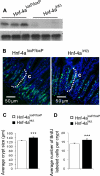
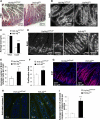

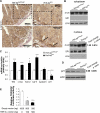

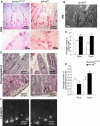

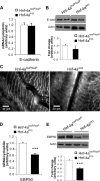


References
-
- Archer, A., D. Sauvaget, V. Chauffeton, P. E. Bouchet, J. Chambaz, M. Pincon-Raymond, P. Cardot, A. Ribeiro, and M. Lacasa. 2005. Intestinal apolipoprotein A-IV gene transcription is controlled by two hormone-responsive elements: a role for hepatic nuclear factor-4 isoforms. Mol. Endocrinol. 19:2320-2334. - PubMed
-
- Babeu, J. P., M. Darsigny, C. R. Lussier, and F. Boudreau. 2009. Hepatocyte nuclear factor 4α contributes to an intestinal epithelial phenotype in vitro and plays a partial role in mouse intestinal epithelium differentiation. Am. J. Physiol. Gastrointest. Liver Physiol. 297:G124-G134. - PubMed
Publication types
MeSH terms
Substances
LinkOut - more resources
Full Text Sources
Other Literature Sources
Medical
Molecular Biology Databases
